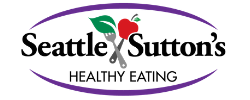What is the Diverticulosis Diet?
Managing your diet with diverticular disease can be challenging and confusing. And given that 58% of Americans over the age of 60 (and almost everyone over 80 years old) are dealing with diverticulosis, this common condition deserves some attention. Dietary management recommendations have drastically changed over the years but old-school beliefs are still lurking around.
Diverticulosis is a condition where small pockets form in the colon. Diet recommendations vary depending on if you have inflammation or infection within these pockets or if you are having no symptoms at all. Most people are unaware they even have the condition until the colon becomes inflamed or infected, a condition called diverticulitis. The causes of diverticular disease aren’t clear; however, it is likely related to a low-fiber diet. When too little fiber is consumed it can cause the muscles in the intestines to work harder which adds pressure and can result in the formation of diverticular pockets. Along with adequate fluid and regular physical activity, a high fiber diet helps keep bowels regular which helps keep the colon healthy.
High Fiber Diet
A diet high in fiber helps to prevent constipation, can help decrease pressure in the colon, and help prevent flare-ups of diverticulitis. Fiber is a part of food that passes through the body undigested and helps to soften the stool and make it easier to pass. High-fiber foods include fresh fruits and vegetables, whole grains, beans and legumes. The American Dietetic Association recommends 25-35 grams of fiber per day. It is recommended to increase fiber gradually to help avoid unpleasant side effects such as gas and bloating. However, during flares of diverticulitis, it is recommended to allow the digestive tract to rest with a low fiber diet. Once transitioned back to normal diet many doctors recommend including foods with fiber as soon as tolerated.
Up-to-Date Nutrition Recommendations
Historically, it was recommended to avoid nuts, seeds, corn, and popcorn with diverticulosis. At the time it was believed that these foods could lodge in the pockets and cause diverticulitis. Recent literature has suggested that these recommendations are NOT necessary and that these foods can be included as tolerated when the colon is not inflamed. Eat the foods you enjoy without any unnecessary restrictions! If you’re trying to prevent diverticulitis attacks, it is recommended to focus on eating an overall healthy diet that is high in fiber. People with this condition can differ in what and how much they can eat, it’s a good idea to decide what’s best by keeping a food journal to identify any foods that may cause symptoms.
Gut-Friendly Probiotics
Some studies suggest that probiotics may help with diverticulosis symptoms and may help prevent diverticulitis. By choosing probiotic-containing yogurt or kefir, other fermented foods containing probiotics, or a high quality probiotic supplement you will get these gut-friendly bacteria which may help keep your digestive tract healthy. See our blog article on probiotics for more information on the benefits and how to shop for them.
It’s time to move out of the dark ages when planning meals for diverticulosis and start including nutrient-packed berries, nuts, and seeds! Focusing on high-fiber, plant-based meals make managing this condition simple and delicious! Did you know that Seattle Sutton’s meals provide about twice as much dietary fiber as the typical American diet? Trying one of our convenient meal plans make managing your diverticulosis a breeze!

Interested in eating healthy? Hungry for more?
